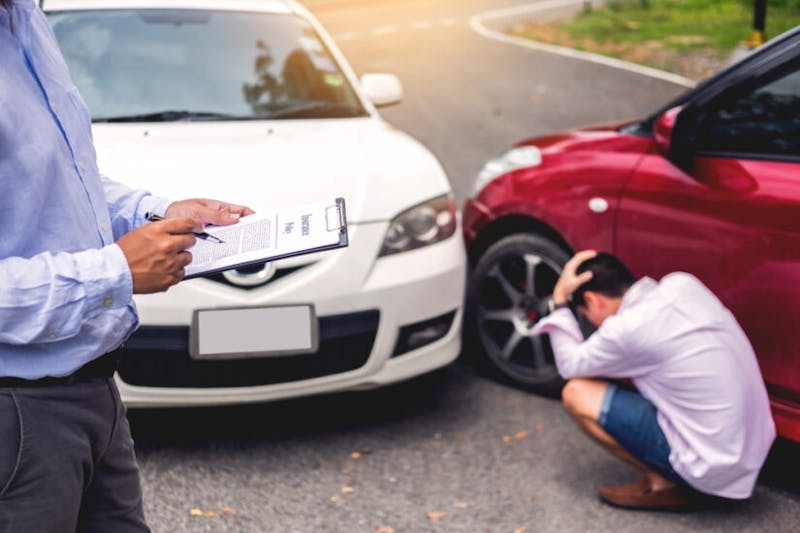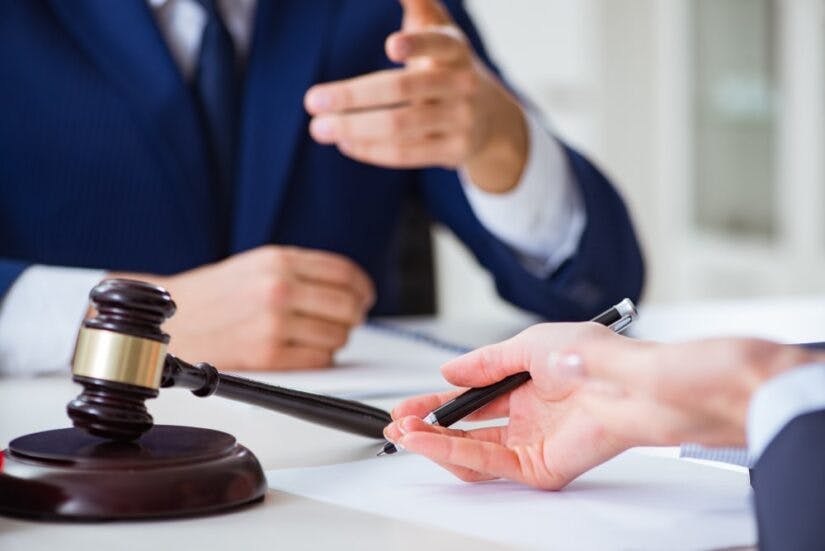
T-bone accidents can be frightening, especially if you are in the vehicle that gets hit from the side. The lack of cushioning on the side means you can suffer serious injuries in a T-bone accident. Navigating the aftermath of a T-bone accident can often be challenging, especially if you have been injured and need to focus on your recovery. Consider hiring an car crash lawyer in Atlanta to guide you through the legal processes. You can continue reading to learn more about the legal resource after a T-bone collision.
What is a T-Bone Accident?
A T-bone accident happens when a vehicle strikes the side of another vehicle. At the point of collision, the two vehicles form a T-shape, and that is why such accidents are referred to as T-bone accidents. These types of accidents are also referred to as broadside accidents.
Common Causes and the Impact of a T-Bone Car Accident
The most common cause of a T-bone accident is failure to yield to oncoming traffic. Other common causes of T-bone accidents include driving under the influence (DUI), overspeeding, reckless driving, fatigue, distracted driving, and failure to judge the speed of the other vehicle. While T-bone accidents are common at intersections, they can happen anywhere, including when vehicles pull out of their driveways.
The reason T-bone accidents are dangerous is that the vehicle has less protection on the sides. Even though most vehicles have airbags on the sides, they may not be enough to protect the occupants from serious car accident injuries. The force of the impact can cause the vehicle that gets hit on the side to spin or roll over. Negligence in car accidents can result in all types of injuries, including traumatic brain injury, fractures and broken bones, lacerations, back and neck injuries, and soft tissue damage.
What To Do Immediately After a T-Bone Car Accident?
Before you think about the legal recourse for a T-bone accident, you need to ensure everyone involved in the accident gets the medical attention they need. While some T-bone accidents are minor and may not require emergency assistance, it is always best to call 911. The dispatcher can help determine what type of emergency services are necessary.
If possible, you should move your vehicle to a safe spot to avoid any further accidents. If you are unable to move at all, just wait for medical assistance to arrive at the accident site. You should never flee the accident site as that could be considered a case of hit-and-run, which is a serious offense and can lead to strict penalties.
If you are in stable condition after the T-bone accident, you can take photos or videos of the accident site. This type of evidence might not be available later, so try to capture as much evidence as you can. Take photos of the property damage, road conditions, injuries, and the surrounding area.
Some injuries might be obvious to you immediately after the accident. This is why it is important to get a medical checkup to ensure you don’t need any medical assistance. Failure to get medical attention can also undermine your case if you seek accident compensation. The insurance company or opposing legal party can argue that because you didn’t get any medical attention after the accident, your injuries were not serious or were not caused by the accident.
Legal Options After T-Bone Car Accident
After a T-bone accident, you have a few different legal options to recover compensation. You get your medical bills paid by your health insurance provider, auto insurance company, or from the at-fault driver. In some cases, you might be able to recover compensation from the vehicle manufacturer or the government.
Your health insurance provider will only pay for your medical care, so you can’t get compensation for lost wages or property damage. Georgia is an at-fault state, which means that the at-fault party is responsible for the damages of the other driver. There is no personal injury protection (PIP) in Georgia, so you will have to seek damages and compensation from the auto insurance company of the at-fault driver.
To get compensation from the government, you will have to prove that the accident happened due to faulty traffic signals, faulty road design, or other government-related issues. Pursuing claims against government entities can be challenging as it is difficult to establish accident liability against them, and some government entities have immunity as a defendant.
T-bone accidents that happen due to faulty vehicle equipment or components could be grounds for a claim against the vehicle manufacturer. For example, if a manufacturing defect in the brake system or seat belts results in your injuries, you can hold the manufacturer responsible for your damages.

Initializing a Personal Injury Claim
Generally, you have a limited time to report the accident to your insurance company. Regardless of who was at fault, you should waste no time in notifying the insurance company. If you think the accident happened due to the other party’s fault, you can initiate a personal injury claim to seek compensation.
Being prepared and cautious when dealing with insurance companies is important, even when you are communicating with your own insurance company. Anything you say can be used to undermine your claim. While you are not required by law to hire a lawyer, there are several benefits to having one. For example, they handle communication with insurance companies, who may try to weaken or deny your claim in an attempt to minimize their payout.
Establishing Car Crash Liability
One of the most important legal steps to get compensation for your suffering is to establish liability for the accident. Either driver can be at fault in a T-bone accident. In some cases, it is straightforward to establish liability. For example, if one driver was making an illegal turn while the other driver was following traffic rules, then the driver making the turn was clearly at fault. However, not all T-bone accidents are so straightforward. As a general rule, if you want to establish liability, you have to prove that someone powered you a duty of care and breached this duty to cause you harm. You can then determine the cost of the damages to determine the full and fair compensation you deserve.
Damages Available in T-Bone Accidents
All accident-related damages can be claimed in a personal injury claim. This includes economic damages such as lost income, medical bills, property damage, and loss of future earning capacity. You also seek compensation for noneconomic damages such as pain and suffering as a result of the accident. In rare cases, you might be able to recover punitive damages; however, for that, you will need to prove willful neglect or wrongdoing of the other driver.
Out-of-Court Settlement
Most personal injury claims are settled out of court through mutual agreement between the parties involved in the accident. The benefit of out-of-court settlement is that you save time and effort that is required to take the case to trial. It also helps both parties avoid the uncertainty of a trial. The initial offer from the opposing party is typically low, so an accident settlement often involves negotiations where both parties engage in discussion to determine fair compensation for damages. If the parties are not ready to compromise and no settlement is reached, the case can be taken to a trial.
Taking the Case to Trial
As T-bone accidents often involve serious injuries and property damages, the settlement amount for the case can be high. The defendant may not agree to pay such a high amount and may be ready to face a trial in court. The trial is typically initiated by filing an accident lawsuit, which is followed by a discovery phase where both parties gather information and evidence for the case. The legal teams also have the opportunity to file pretrial motions and engage in jury selection.
In the next step, the attorneys present the opening statements and share evidence for the case. Each attorney is allowed to cross-examine the witnesses to challenge their statements. After the closing statements, the jury deliberates and shares the verdict. Either party has the option to appeal against the verdict. Taking the case to trial can often be a drawn-out process, so you should try your best to settle the case out of court. However, if you do choose to take the case to trial, hire an experienced lawyer with experience in the litigation process for car accident lawsuits.
Consult with an Attorney
If you want to learn more about the legal recourse after a T-bone accident, you are welcome to consult with our attorneys at The Pendergrass Law Firm. Our car accident lawyers can assess the facts of your case to guide your legal options. Ideally, you don’t want to wait too long to file a personal injury claim. Not only do you abide by the statute of limitations, you also want to gather evidence for the case, which might not be available if you delay too long. At The Pendergrass Law Firm, our personal injury attorney specializes in all types of auto accidents and has extensive experience in handling T-bone accident cases, including fault determination and handling insurance claims. We can help you with fault determination, insurance negotiation, and the litigation process to recover compensation.


